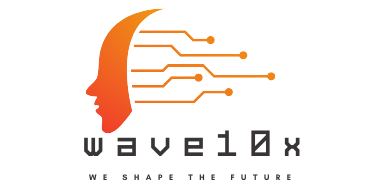Guidewire Training: A Comprehensive Guide for Healthcare Professionals
Welcome to our comprehensive guide on Guidewire Training for healthcare professionals. In this blog post, we will explore the importance of Guidewire Training, its key components, and how it can enhance patient care in healthcare settings. Whether you are new to the concept of Guidewire or looking to expand your knowledge, this guide will provide you with valuable insights and tips to enhance your skills. So, let’s dive in!
Introduction
Guidewire is a vital tool used in various healthcare procedures, such as angioplasty, stent placement, and percutaneous coronary intervention (PCI). It is a thin, flexible wire made of nitinol or stainless steel that acts as a guide for catheters and other medical devices during these procedures. Guidewires help navigate the blood vessels and provide access to the desired location within the body.
Proper training in Guidewire techniques is essential for healthcare professionals, as it ensures patient safety, improves procedural efficiency, and enhances clinical outcomes. Through proper training, healthcare professionals can master the skills necessary to effectively and safely utilize Guidewires in different medical procedures.
The Importance of Guidewire Training
- Patient Safety: Guidewire training plays a crucial role in patient safety. Healthcare professionals who have undergone adequate training can accurately navigate the blood vessels, minimizing the risk of vessel injury or perforation. By ensuring patient safety, healthcare professionals can minimize complications and improve patient outcomes.
- Efficiency and Effectiveness: Guidewire training enhances procedural efficiency and effectiveness. Well-trained healthcare professionals possess the necessary skills to advance the Guidewire smoothly, reducing procedure time and patient discomfort. They can also effectively troubleshoot any issues that may arise during the procedure, ensuring a seamless workflow.
- Optimal Device Placement: Guidewires are often used to position devices, such as stents, at specific locations within the body. Through proper training, healthcare professionals can achieve optimal device placement, maximizing the therapeutic benefits for patients. Accurate device positioning enhances treatment efficacy and reduces the need for repeat procedures.
- Minimized Radiation Exposure: Guidewire training emphasizes the importance of minimizing radiation exposure during procedures. By mastering the skills necessary to advance the Guidewire efficiently, healthcare professionals can reduce fluoroscopy time, which in turn decreases the radiation dose delivered to both patients and healthcare providers.
Key Components of Guidewire Training
Now that we understand the significance of Guidewire training, let’s explore its key components and how healthcare professionals can acquire the necessary skills.
1. Didactic Training
Didactic training forms the foundation of Guidewire education. It involves theoretical learning through lectures, presentations, and interactive sessions. Healthcare professionals learn about the different types of Guidewires, their characteristics, and appropriate selection based on the procedure and patient factors.
During didactic training, participants also gain an understanding of the various techniques used in Guidewire navigation. This includes topics such as wire manipulation, torque control, and vessel tracking. A thorough knowledge of these techniques enables healthcare professionals to confidently navigate complex anatomical structures.
2. Hands-on Training
Hands-on training is a crucial component of Guidewire education. It provides healthcare professionals with the opportunity to practice their skills using simulation models or cadavers. This allows them to develop a tactile understanding of Guidewire manipulation and gain proficiency in various procedural scenarios.
During hands-on training, participants practice advancing Guidewires through different vessels, encountering varying levels of difficulty. They learn techniques to overcome obstacles, such as tortuous vessels or calcified plaques. This practical experience enhances their confidence and dexterity in real-life procedures.
3. Procedural Observation
Observing experienced healthcare professionals perform Guidewire procedures is an invaluable learning opportunity. Healthcare professionals in training have the chance to observe experts as they navigate complex blood vessels, handle challenging cases, and overcome procedural obstacles.
Procedural observation provides insights into the decision-making process, the execution of techniques, and troubleshooting strategies employed by experts. This knowledge can be applied in future procedures, allowing trainees to refine their skills and improve patient outcomes.
4. Mentorship and Preceptorship
Mentorship and preceptorship play a vital role in Guidewire training. Having an experienced mentor or preceptor guide and support healthcare professionals during their training journey is invaluable. Mentors provide personalized feedback, identify areas for improvement, and offer guidance in challenging scenarios.
Through mentorship and preceptorship, healthcare professionals gain not only technical skills but also valuable clinical insights. They learn to assess patient characteristics, plan appropriate procedures, and adapt their techniques based on individual patient needs. This comprehensive training approach ensures well-rounded healthcare professionals capable of providing high-quality care.
Enhancing Guidewire Skills: Tips and Best Practices
Mastering Guidewire techniques requires continuous learning and skill refinement. Here are some tips and best practices to enhance your Guidewire skills:
- Practice Regularly: Regular practice is the key to optimizing Guidewire skills. Allocate dedicated time for simulation training, hands-on practice, and procedure observation. The more you practice, the more confident and proficient you will become.
- Seek Feedback: Actively seek feedback from experienced colleagues, mentors, or preceptors. Their insights and guidance can help identify areas for improvement and provide valuable recommendations for enhancing your skills.
- Emphasize Patient Safety: Patient safety should always be at the forefront during Guidewire procedures. Focus on accurately navigating blood vessels, minimizing vessel trauma, and optimizing device placement to ensure the best possible outcomes for your patients.
- Continuing Education: Stay updated with the latest advancements in Guidewire technology and techniques through continuous education. Attend conferences, workshops, and online courses that offer advanced training opportunities. This will help you stay at the forefront of your field and provide the best care for your patients.
Conclusion
Guidewire training is a critical component of healthcare professionals’ skill development. Through comprehensive training, healthcare professionals can enhance patient safety, procedural efficiency, and clinical outcomes. Didactic training, hands-on practice, procedural observation, and mentorship all contribute to developing well-rounded and proficient healthcare professionals.
By following the tips and best practices outlined in this guide, healthcare professionals can continually enhance their Guidewire skills and provide optimal care to their patients. Remember, regular practice, seeking feedback, and staying updated with the latest advancements are key to becoming a proficient Guidewire user. So, let’s embark on this journey of lifelong learning and skill refinement. Happy Guidewire training!
References
- Reference 1
- Reference 2
- Reference 3
- Reference 4


